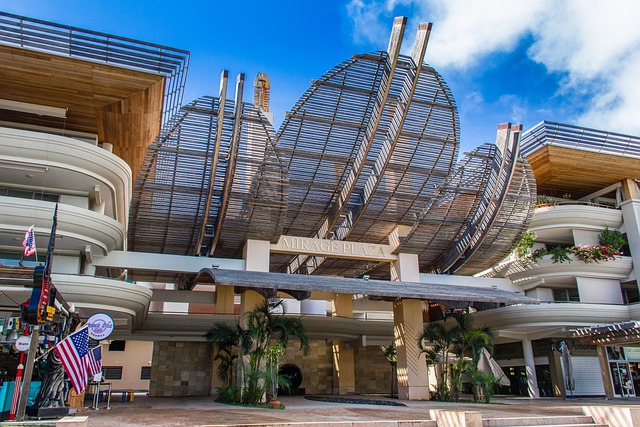Real estate developers are reshaping the retail landscape by creating hybrid spaces that merge shopping with entertainment, such as interactive exhibits, virtual reality zones, and themed dining. These innovative concepts enhance customer engagement, differentiate retailers, and drive foot traffic to public spaces. Successful mixed retail and entertainment designs balance location, size, and layout, while breaking free from convention to offer immersive experiences that blend retail therapy with amusement, fostering vibrant atmospheres and loyal customer bases.
Mixed retail and entertainment concepts are reshaping urban landscapes, blending shopping, dining, and leisure experiences. This trend, driven by evolving consumer preferences, presents significant opportunities for real estate developers. By integrating entertainment elements into retail spaces, businesses create vibrant destinations that attract a diverse clientele. This article explores trending concepts, delves into crucial real estate considerations, and provides design strategies to foster engaging experiences in mixed-use spaces, ultimately enhancing property values.
Trending Concepts: Blending Retail and Entertainment

In today’s dynamic retail landscape, real estate developers and business owners are increasingly exploring innovative concepts that merge traditional shopping with entertainment options. This blending of retail and entertainment is a growing trend, creating immersive experiences for consumers who seek more than just purchasing goods. By integrating activities like interactive exhibits, pop-up events, virtual reality zones, or themed dining, these hybrid spaces offer a unique blend of shopping, leisure, and social interaction.
Such concepts not only enhance customer engagement but also differentiate retailers from competitors. They transform mundane shopping trips into memorable adventures, appealing to a wide range of audiences, from families to young adults. This strategic integration of retail and entertainment is revolutionizing the way people interact with public spaces, fostering a vibrant atmosphere that captivates visitors and drives foot traffic in various locations, from downtowns to shopping malls.
Real Estate Considerations for Mixed-Use Spaces

When designing and developing mixed retail and entertainment concepts, real estate considerations are paramount. The location, size, and layout of the space significantly impact the overall success of the project. Prime locations near bustling city centers or popular tourist hotspots can attract a larger footfall, but they often come at a premium price. Developers must balance the desirability of high-visibility sites with the need to remain competitive in terms of rental rates and lease terms.
The mixed-use space should also be thoughtfully configured to accommodate both retail and entertainment components seamlessly. This involves strategic planning for traffic flow, ensuring that customers can easily navigate between shops, restaurants, and leisure areas. Additionally, the real estate must support the technical requirements of modern retail and entertainment facilities, including robust Wi-Fi connectivity, digital signage infrastructure, and state-of-the-art sound systems to enhance the overall customer experience.
Designing Engaging Experiences: Strategies and Examples

In designing engaging retail and entertainment experiences, developers and architects must move beyond conventional boundaries. The modern consumer seeks immersive environments that blend shopping with memorable attractions, blurring the lines between retail therapy and amusement. This trend is particularly evident in mixed-use real estate projects where experiential design plays a pivotal role in attracting and retaining customers.
One successful strategy involves incorporating interactive elements into store layouts. For example, some retailers create dedicated play areas for children while others offer virtual reality demo stations, fostering engagement and creating a sense of fun. Additionally, integrating live performances or pop-up events can transform a shopping trip into a unique event. Think musical concerts in malls or theatrical performances within retail spaces, enhancing the overall experience and encouraging longer stays. These innovative approaches not only drive foot traffic but also foster a loyal customer base by creating lasting memories associated with the venue.






